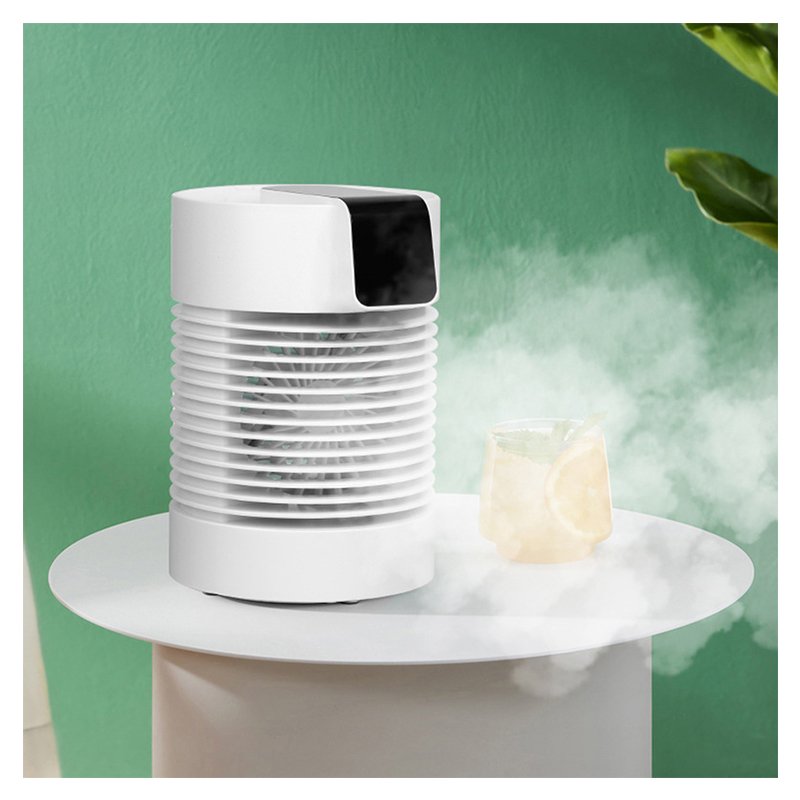Keeping your home cool during the summer months can be a challenge, particularly if you do not have air conditioning units. Buying fans can help you leave your rooms comfortably chilled, but which model you end up purchasing will depend on several factors.
1.Types of Fans

The size of your rooms, your budget, and your personal preference will all affect your decision on what type of fan to buy. Here are the most common models:
Desk Fans
For a quick and easy solution, desk fans are perfect for both home and office environments.
Simply position the fan on your desk, plug it into a PowerPoint and turn it on to keep cool.
A desktop fan with a timer can be set to turn itself off automatically, and a desktop fan with a remote allows you to change the settings without getting up.
If you’re wondering “What’s the quietest desktop fan?”, models such as the Dyson Pure Hot+Cool Link desktop fan are designed to be quiet and powerful.
Tower Fans
If you don’t have a lot of space, tower fans could be just the ticket. These tall and narrow fans only take up a small amount of floor space, but they’re still strong and usually quiet.
A tower fan with a thermostat uses the thermostat to check the temperature of the room and then turns the fan on and off when needed to maintain the desired room temperature.
A tower fan with a dust filter removes dust particles from the air to help reduce airborne allergens which can aggravate allergies and asthma.
There are also tower fans without blades, such as those made by Dyson, which are extremely safe because there are no fast-spinning blades to worry about.
Pedestal Fans
These are larger than a desk fan, making them better for covering bigger rooms.
Height-adjustable models are available to provide you with greater flexibility and control.
Ceiling Fans
As their name suggests, these fans suspend from the ceiling and should cool the whole room.
Ceiling fans offer a powerful and economic alternative to air conditioning units, but if used with an air conditioner can increase its efficiency.
2.Fan Power

A combination of three key factors determines how powerful a fan is: the size of the fan, its speed settings, and its motor power.
Fan size
A small fan suits a small space, while a bigger fan allows you to cover a larger area.
Fan speed
A fan with higher speed settings (look for a greater number of watts) creates a cooler temperature and gives you more control.
Motor power
Ceiling fans are powered by a motor, so you need to consider the size and power of the motor before you decide which ceiling fan to buy. Generally speaking, the bigger the motor size the faster the fan will spin, and the more stable and quiet it will be.
When it comes to choosing the right fan for your needs, you also need to consider the size of the room you want to cool, and how much electricity the fan will use (as this will contribute to your power bills).
Room size
If you’re renting or want a fast, portable solution, pedestal fans work well in bedrooms because you can adjust the height of the fan and angle it towards the bed (with the fan facing one direction or oscillating around), whereas tower fans tend to suit living areas because they’re more compact and can be positioned out of the way.
If you’re looking for something more permanent for the home you own, a ceiling fan is a cost-effective way to cool bedrooms and living rooms. Bigger motors are best for larger-size rooms and fans that have longer blades. Also, remember that you need a ceiling height of at least 2.1-2.4m for most fans to perform at their best and that the fan may need to be lowered if you have a high ceiling, so check the fan model’s requirements against your room measurements before you buy.
3.Additional Features

Some common features to look out for in portable fans include:
Oscillating head: A rotating fan head ensures a larger area is cooled
Tilt action: This allows you to maneuver the fan in various directions
Timer: Controls the operating time. Can include a sleep timer
Protective cage/mesh: A safety feature for small children and pets
Remote control: Turn your fan on and off with the ultimate inconvenience
Additional features are also available when buying ceiling fans:
Reverse speed: Reverse action circulates heat for an even room temperature
Controls: Opt for a basic pull chain, wall controls, or hand-held remote
Integrated lights: Some ceiling fans come with a light fitting option
Ceiling drop: The measurement for how far from the ceiling the fan will sit